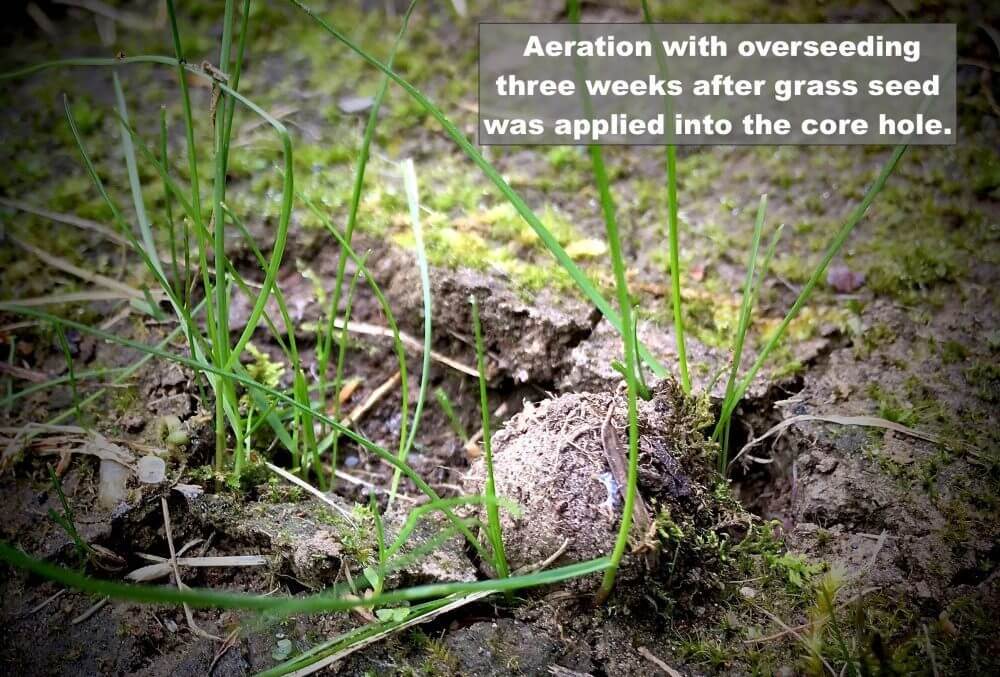The undisputed best time of year to aerate and seed a lawn is in the fall. Warm soils, cool nights and dying annual weeds make fall conditions the ideal time for aeration combined with overseeding as well as general lawn seeding.
Versus Spring
Unlike fall, spring soils are cold and packed full of dormant weed seeds ready to grow. In the spring, the competition is fierce as annual weeds attempt and often win the race for growing space, outcompeting your newly seeded lawn. If those factors were not enough, typical summer heat can spell trouble for young grass plants with shallow and tender root systems, often succumbing to disease, heat, and or drought. Many have tried their best only to be defeated, left staring at more crabgrass than lawn come July.
Benefits
Aeration by itself is a wonder tool to help reduce normal compaction caused from use and even mowing a lawn. Core aeration is a simple, yet effective way to give the lawn’s root system the air pockets they need to grow and stay healthy. Other benefits include increased moisture penetration, improved penetration of fertilizers and other lawn products, and assists in the rate of thatch decomposition.
Aeration creates small holes in the lawn about an inch in diameter and a few inches deep…a perfect planting surface to add new grass types into a lawn, especially those that might be clumpy or have small open patches. After your lawn is aerated, grasses better suited for your lawn can be applied into the holes, effectively thickening the existing lawn. If your lawn is shaded, it’s a perfect time to add more shade grasses. If your lawn is dry and sunny, a perfect time to add more drought tolerant and tougher grass types to beef up your existing turf. This is a true overseeding process, adding grass to your existing lawn after it is aerated.
Larger Seeding Projects Too
Repair work to larger damaged patches of lawn, including complete installations or renovations, are also best reserved for late summer and autumn. The lawn can be aerated first with loam being applied afterward to create a perfect seeding bed while reducing compaction below the new lawn.
Keys for Success
On a final note, for a successful aeration, the three most important factors for a high quality core removal are adequate soil moisture, a commercial grade machine and newer tines. Newer tines and high quality machines simply pull a deeper, superior core for better results and creating an ideal seeding environment. When it comes to overseeding and lawn repair, the grass seed used is of paramount importance. Using one blend, say ryegrass for all situations, is just not the right thing to do. Almost all lawns have different areas that require specific seed types, ranging from shade, to play areas, slopes, to full sun.


